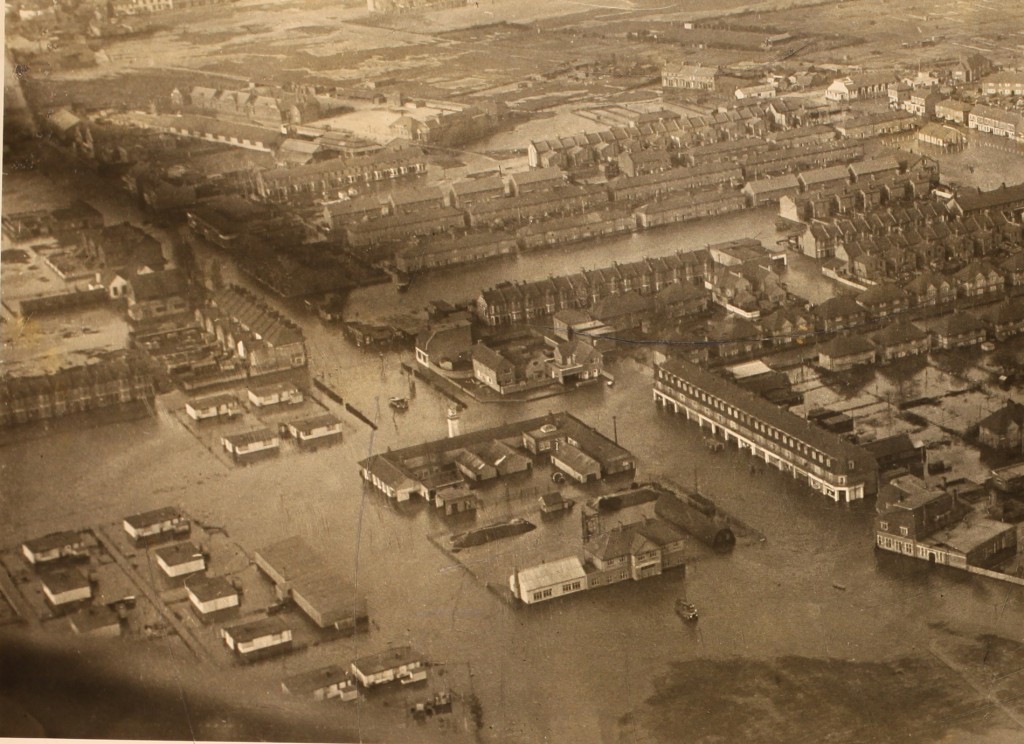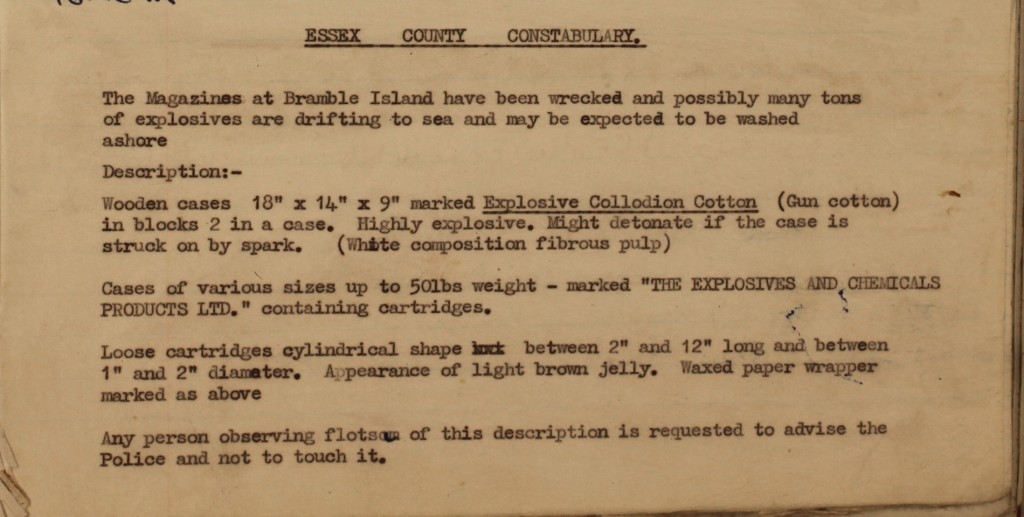Ahead of his talk at ERO to launch his brand new book on Essex in the Second World War, we caught up with author Paul Rusiecki to find out more about his research. Join us for Paul’s talk at Dark Days and Dark Thoughts: Morale in Wartime Essex, 1940-41, on Saturday 9 May. See our events page for full details.
How did you come to write Under Fire?
It was a natural progression after writing The Impact of Catastrophe [Paul’s book on Essex during the First World War], as I wanted to compare and contrast the county’s experience of two world wars. I had already done a lot of work on Essex in the inter-war period, but I chose to ignore chronological conventions, leave a book on 1918-39 to another day, and jump forward to the Second World War. I was already very well acquainted with the resources that were available, having spent the best part of twenty years researching various aspects of the county’s twentieth century history.
What sort of sources did you use to write your book?
Secondary works are always an essential starting point so I spent a great deal of time in the libraries at Colchester, Chelmsford, Southend and Stratford. The Essex Record Office is a fantastic treasure trove of information on all aspects of the war and is matched only by the details which can be found in the county’s newspapers. Aided by my wife and son (both trained historians) I also visited the Imperial War Museum, the National Archives and the Mass Observation Archive at Sussex University, where we spent four days during a grim January. So far I have not made much use of the internet, as I prefer to use books rather than unauthenticated articles.
Did anything surprise you during your research?
I think that the honest answer must be no. In the last 40 years some historians have spent time trying to debunk the idea of Britain as a completely united nation engaged in total war and fighting for its survival, especially in 1940 and 1941, spurred on by the ‘Dunkirk spirit’ and the ‘Spirit of 1940’. In fact most people who lived through the war did not have this rosy view of things. I was not surprised to find a great deal of evidence of a positive, patriotic and courageous attitude in my researches, just as I also expected to find that people could be selfish, nervous, defeatist, or that they engaged in criminal activities. I expected to see all forms of human behavior being exhibited, and I certainly did!
Are there any stories that you found during your research that have particularly stuck with you?
Naturally the stories that stick in the mind often come from the time of the Blitz, or the attacks by V-1s and V-2s. How a direct hit on an Anderson shelter meant that a Dagenham warden had to collect body parts with a shovel and a sack. At Colchester when a laundry was hit, a dustbin lorry was controversially used to carry the bodies away. I also found out that when Severalls ‘Mental Hospital’ was bombed in 1942, many patients were killed. There is evidence that some residents of the town felt that the bomb could not have fallen in a better place as the people there were sub-normal. Then I discovered a note to the Essex War Agricultural Committee from a man who could not come to work because his ‘dear young daughter’, a patient, had been killed there. It brought a tear to my eyes, I must admit, and it also made me cross-reference my thoughts as to what was happening in Germany at this time.
Do you have any family connections with the Second World War?
My father was serving as ground crew in the Polish Air Force when it was practically obliterated in the first few days of the German blitzkrieg of 1939. He and others retreated from the advancing Germans and evaded capture by the Russian invaders. They made their way across Slovakia, a German protectorate, aided by local people, and then travelled through Rumania, including hanging on underneath trains. Having reached the coast they were picked up in secret by British agents who ferried them to Egypt, and from there to France. He had not been there long when the Germans invaded in 1940 and he was evacuated from a west coast French port. Once in England he joined the Free Polish Navy, and crewed Motor Torpedo Boats during the war. My mother’s family lived in south Yorkshire and remembered the severe bombing of Sheffield in December 1940, when the night sky to the south was lit up a deep red from the blazes.
Is this your first book?
I wrote a book called The Plough and The Pick, about the two coal mining villages I grew up in Yorkshire. I’ve written many articles in various journals. My second book The Impact of Catastrophe: The People of Essex and the First World War, was published in 2008 by the Essex Record Office. I shall shortly be working on an occasional paper for the Essex Society of Archaeology and History, which will be a sort of guide to anyone interested in researching the impact of the German air war on Essex 1940-45. In the long–term I will be continuing to dig into Essex in the inter-war period, but I also hope to publish a history of the county from 1945 to about 1975.
Are you a full-time author?
Since I retired in 2009 I have more choice in when I can do my research, but as everyone who has ever retired says, how did I find time to fit in work?? Certainly as a retired teacher the huge never-ending commitment to preparation and marking has gone. So it is easier, but to be honest – full-time work, even leisure work – of any sort – never again!
What is your connection with Essex?
I married my wife who was born and raised in Colchester, so I have known the town and gradually more and more of the county since 1972. We returned here when our first child was born in 1978 and have lived here ever since. I did my PhD at Essex University and spent the last 4 years of my teaching career at Colchester County High School for Girls. I have been Programme Secretary of the Essex branch of the Historical Association since 2002, and that, and much of my research, takes me a lot to Chelmsford.
Where is your favourite place in Essex?
I love Blackpool so naturally I love to go to Clacton or Walton. Colchester’s Castle Park is a simply wonderful facility right in the heart of this busy town, it’s beautiful and quiet, if you avoid the children’s playground! And of course there’s the Essex Record Office. My second home!
What advice would you give to someone thinking of writing a history book?
Always check first to see what’s been written. No sense in re-inventing the wheel. This applies whether you have a very in-depth, highly focused project in mind, or a more general, wider study. Always take advice from people who have expertise and knowledge, never be afraid to ask for help. People are usually immensely generous with their time. Keep an open mind about where you might find resources – that way you might not overlook some obvious ones. Look at how other people write. Historical writing is first and foremost about communicating the past to people in simple, elegant and easily understood language. That doesn’t mean talking down to people. It means avoiding both jargon and writing which is so convoluted and obscure that it is hard to follow and understand. If you come across any history book like that, even by an eminent historian, or a ‘TV historian’, chuck it in the bin!





 Ahead of his talk at ERO as part of the
Ahead of his talk at ERO as part of the 



















